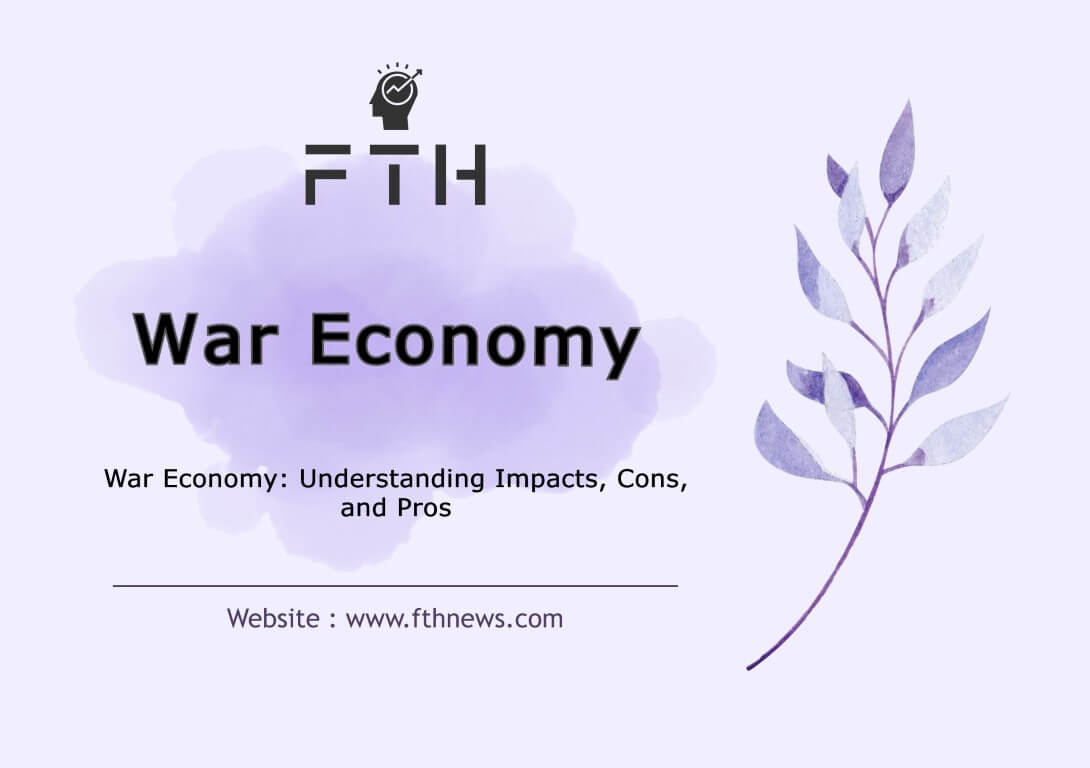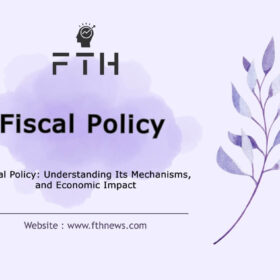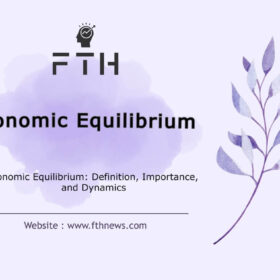
War Economy: Understanding Impacts, Cons, and Pros
When the term “war economy” surfaces, it often conjures images of the thriving arms trade, yet its influence extends far beyond this sector.
Art, literature, politics, culture, and even philosophy within nations are significantly shaped by the tides of war, with some great thinkers swayed into determinism under its powerful influence. Amidst the myriad effects of war, “economy” emerges with a distinct nature, weaving together both positive and negative consequences.
Unlike the varied impacts of war, the positive economic effects predominantly favor the primary victors—the countries outside the battlefield. At times, the gains stemming from a victorious outcome can be so profound that they prompt nations to initiate war.
Meanwhile, those engaged in conflict often resort to selling goods and natural resources at reduced prices to fund the war and subsequent reconstruction efforts. Simultaneously, imports surge to meet the exigencies of war and the subsequent restoration period.
War also presents unforeseen opportunities: reduced borrowing costs, capital influx, advancements in weaponry and military tactics, and an expanded foothold in international trade among those fueling the war machinery.
However, perhaps the most significant gain for countries involved is the migration of human resources. Each immigrant embodies a valuable economic and social asset for their destination country. Alongside their skills, knowledge, and the resources invested in their growth and education, they contribute freely to the development and productivity of their new home.
The war economy is a complex tapestry interwoven with not only the costs and destruction but also unexpected opportunities and resource migrations, showcasing the intricate relationship between conflict and economic dynamics.
Understanding a War Economy
In facing critical threats, whether from military adversaries or, as seen in recent times, public health crises, the concept of a war economy takes center stage. Unlike the market economy, where prices steer resource allocation and coordination, the war economy operates under a regime of nationalization and centralized control.
During shortages and inflation, common in economies undergoing such crises, the government steps in to ensure the essential needs and livelihoods of its populace. This shift positions the government in opposition to the decentralized activities of the private sector, enabling it to regulate monetary policies, control prices, and oversee the production of fundamental goods essential for collective sustenance.
The severity and urgency of such decisions are contingent upon the crisis’s scale and the existing production capacity and storage. Transitioning swiftly from a market economy to a war economy is crucial to circumvent exacerbating market inefficiencies.
When this transition occurs slowly, the increased demand for crucial goods triggers shortages, severe inflation, and a distribution system based on financial capacity rather than the necessities of the crisis.
The pivot from individual panic-driven rational behavior towards securing essential goods to a collective tragedy reflects the dearth of reliable information during these tumultuous times. The evolution of the war economy, particularly following full-scale conflicts like the two world wars, signifies a complete societal mobilization for war efforts, blurring social distinctions and making everyone part of the war machinery.
Defining the War Economy
Apart from its economic repercussions, the war economy instigates structural changes within nations. Priorities shift from developmental pursuits such as educational infrastructure to the enhancement of war industries, a common occurrence in such times.
A war economy fundamentally reroutes a country’s economic resources to meet the demands of war. This reconfiguration often leads to reduced economic growth, heightened inflation, and increased social inequality. To mitigate the adverse effects, governments must implement strategic measures.
Central to the war economy is the government’s pivotal role in resource allocation. Nationalization becomes common as the government redirects resources to meet the exigencies of war, curtailing the production of non-essential goods. This shift results in price surges owing to augmented production costs, decreased supply, and heightened demand.
The impacts of a war economy on a nation’s economic landscape are multifaceted. Economic growth takes a hit due to reduced production, increased costs, and decreased investment. Furthermore, inflation surges, contributing to a widening wealth gap among the populace.
The Goals of a War Economy
In a war economy, a nation shifts its focus to produce essential goods and services required during times of conflict. This restructuring prioritizes defense and security expenses, controlling resource allocation through quotas. Countries must strategically manage resources to meet wartime demands. Tax revenue primarily fuels defense efforts, and borrowed funds are directed towards military maintenance and national security.
This economic model emerges out of the necessity to prioritize national defense. It drives advancements in industry, technology, and medicine as nations compete to create superior defense products at lower costs. However, this emphasis on defense can hinder overall development and domestic production.
Historical Instances of War Economies
During World War II, the Allies, including countries like the United States, Japan, and Germany, embraced the principles of a war economy. The economic might of the United States played a pivotal role in supporting the Allied forces, providing crucial funding and equipment necessary to secure victory.
Following the Japanese attack on Pearl Harbor, the U.S. transitioned into a war economy, implementing measures such as increased taxes and the sale of war bonds to finance its wartime endeavors.
At the behest of President Franklin Delano Roosevelt, the War Production Board (WPB) was established. This entity was tasked with allocating vital resources like copper, rubber, and oil towards the war effort. Additionally, the WPB awarded defense contracts to private corporations, encouraging them to pivot their production toward military equipment and supplies.
Amidst this shift, women in the United States played a significant role in the war economy. They stepped into roles previously held by men who had joined the military, taking up positions in military production and various other sectors crucial for supporting the war effort.
This historical example demonstrates how countries mobilized their economies during times of conflict, redirecting resources and labor to support their military needs and overall war strategies.
Advantages of War Economy
Technological Advancements: Wars often drive rapid technological progress as nations invest heavily in research and development for military purposes. Innovations in medicine, communication, transportation, and other fields emerge from wartime needs.
Industrial Growth: The focus on military production stimulates industries, creating jobs and economic growth. This surge can foster new technologies and advancements that later benefit civilian sectors.
Employment Opportunities: During wartime, the demand for labor increases, creating employment opportunities, especially for marginalized groups, including women and minorities.
Infrastructure Development: Post-war reconstruction leads to extensive investment in infrastructure, rejuvenating cities and economies, which can catalyze economic growth.
Disadvantages of War Economy
Human and Economic Costs: Wars result in immense human suffering, loss of life, and physical and psychological trauma for soldiers and civilians. The economic cost of war, including destruction, healthcare, and welfare for veterans, can burden a country for years.
Resource Diversion: The focus on military production diverts resources away from essential civilian needs like healthcare, education, and infrastructure, impacting the well-being and development of a nation.
Debt and Economic Instability: Financing wars often leads to massive debts, impacting a nation’s economy for generations. These debts can lead to economic crises and affect future generations.
Ethical Dilemmas: The war economy raises moral questions about profiting from conflict, the ethics of weapons manufacturing, and the responsibilities of companies and governments involved in warfare.
Balancing the advantages and disadvantages of a war economy is crucial in understanding its complex impact on societies and economies.
The War Economy, Economic Impact
The dynamic influence of the war economy goes far beyond its immediate economic effects. It permeates various social and economic dimensions, sculpting a transform landscape within nations and across the globe.
Industrial Evolution: During conflicts, industries serving military demands flourish, often reshaping industrial landscapes. This surge accelerates technological innovations and fosters the emergence of novel industries, triggering substantial advancements and techniques.
Resource Redirection: Beyond tangible goods, war leads to a redistribution of human resources, skill sets, and expertise. This reconfiguration prompts significant shifts in labor markets and societal structures, fundamentally altering workforce dynamics.
Geopolitical Transitions: Wars reshape geopolitical realities, rearranging international relationships, trade alliances, and economic dependencies. These alterations have enduring impacts on global economies, altering the geopolitical balance.
Societal Adaptations: Wars prompt profound societal adaptations, challenging cultural norms, societal roles, and gender dynamics. Historical instances reveal opportunities for marginalized groups, driving social change and broader workforce inclusion.
Reconstruction Dynamics: Post-war periods herald massive investments in rebuilding infrastructure, industries, and communities, offering a pivotal juncture for economic resurgence and growth.
Long-Term Financial Burdens: The economic aftermath of war extends well beyond battlefields, leaving nations grappling with substantial debts and ongoing costs related to healthcare, pensions, and the welfare of veterans and affected communities.
Technological Leaps: Wars historically fuel significant technological advancements, driven by the pursuit of military superiority. These innovations often transcend military use, influencing various civilian industries like healthcare, transportation, and communication.
Ethical and Moral Considerations: The war economy prompts discussions on the ethical implications of profiting from conflicts, the human cost of warfare, and the moral responsibilities of entities involved.
Insights for the Future: Understanding the historical and contemporary impacts of war economies is instrumental in anticipating future conflicts, their economic implications, and devising adaptive strategies to mitigate their negative effects.
Cultural Resonance and Evolution
Artistic Expression: Wars and the subsequent economies have historically influenced artistic endeavors, reflecting the prevailing sentiments, struggles, and resilience of societies amidst conflict. Art often serves as a mirror to societal conditions and becomes a means of expression and protest.
Literary Narratives: Literature reflects the impacts of war economies, capturing the individual and collective experiences, shedding light on the societal upheavals, and often becoming a record of the cultural shifts during and after wartime.
Political Philosophies: The ethical, moral, and political ideologies shaped during war periods often leave enduring imprints on the collective consciousness of societies. The philosophies emerging from these periods contribute to the ongoing political discourse and policy formations.
Humanitarian and Social Implications
Humanitarian Responses: Wars, and by extension war economies, lead to significant humanitarian crises. Addressing these crises often sparks global and local responses, shaping policies, aid programs, and international relations.
Social Dynamics: The war economy reshapes social fabric, influencing family structures, community dynamics, and societal norms. The impact is profound, particularly in post-conflict societies where rebuilding social cohesion becomes a critical aspect of recovery.
Psychological and Emotional Fallout
Trauma and Recovery: The psychological toll of war economies is profound, not just on those directly involved in conflict but also on entire populations. Recovery from this trauma becomes an essential part of rebuilding post-conflict societies.
Environmental Consequences
Ecological Impact: Wars and the associated economic activities have severe environmental repercussions, leading to land degradation, deforestation, pollution, and resource depletion, impacting ecosystems and future sustainability.
Global Economic Paradigms
Trade and Global Relations: Wars and their economies often prompt reshuffling of global trade relations and create new economic paradigms, influencing global markets and regional alliances.
Technological Innovations and Knowledge Transfer
Knowledge Exchange: Wars foster knowledge transfer, with innovations in medicine, engineering, and communication often finding applications beyond the battlefield, contributing to broader societal advancements.
Legal and Human Rights Perspectives
Legal Frameworks and Human Rights: Wars raise questions regarding the implementation and upholding of international laws and human rights, shaping legal frameworks and institutions.
The war economy’s impact extends into diverse dimensions—cultural, humanitarian, psychological, environmental, and global economic realms—engendering a complex tapestry of socio-economic and ethical implications that reverberate through generations and global landscapes.














